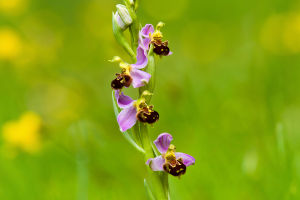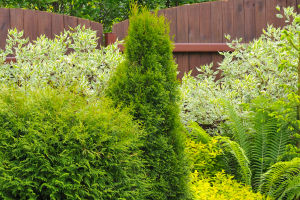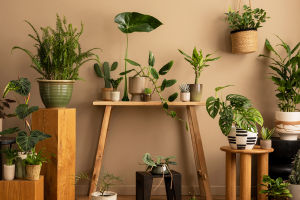Have you ever looked into a pond or lake and wondered how the plants growing underwater actually survive?
Unlike their land-based cousins, aquatic plants live in an environment with limited light, constant water pressure, and low oxygen levels. Yet, they manage not just to survive—but to flourish!
Let's dive into this fascinating topic and explore the brilliant adaptations that allow aquatic plants to live submerged beneath the surface.
Types of Aquatic Plants
Aquatic plants are generally divided into three categories: submerged, floating, and emergent plants.
• Submerged plants such as eelgrass or hornwort grow entirely underwater.
• Floating plants like water lilies or duckweed have leaves that rest on the water's surface.
• Emergent plants such as cattails and arrowhead root in water but extend their stems and leaves above the surface.
Each type has evolved different strategies to deal with the aquatic environment, making them uniquely equipped for life in water.
Breathing Without Lungs: Oxygen Adaptations
One of the greatest challenges underwater is the limited availability of oxygen. Terrestrial plants absorb oxygen from the air, but aquatic plants must extract it from water, where it's far less abundant.
Many aquatic plants solve this by developing aerenchyma, a spongy tissue filled with air spaces. This tissue allows oxygen to move from the upper parts of the plant down to the roots. In floating and emergent plants, stomata (tiny openings for gas exchange) are located on the upper leaf surfaces, which remain exposed to the air, allowing for direct oxygen intake.
Submerged plants rely on diffusion—absorbing dissolved oxygen directly through thin leaves and stems. This process is slow, which is why many aquatic plants grow slowly or have narrow, finely divided leaves to increase surface area and improve gas exchange.
Getting Enough Light: Transparent Tricks
Sunlight is essential for photosynthesis, but underwater light levels drop quickly with depth. Aquatic plants adapt in several ways:
• Broad, thin leaves maximize surface area to capture more light.
• Chloroplasts in submerged plants often cluster near the surface of the leaves for more efficient light absorption.
• Many submerged species are highly flexible, allowing them to wave gently toward the light, even in flowing water.
In shallow waters, plants may grow toward the surface, while floating plants simply position themselves directly where the light is strongest.
Root Systems: Anchors or Nutrient Tools?
Not all aquatic plants use roots for the same purpose. In terrestrial plants, roots mainly absorb water and nutrients from the soil. But aquatic plants live surrounded by water—so do they even need roots?
• Submerged plants like elodea may have weak or even absent roots. They absorb most nutrients directly through their stems and leaves.
• Floating plants often have dangling roots that collect nutrients from the water column.
• Emergent plants, on the other hand, have strong root systems that anchor them into mud or sediment and absorb nutrients in the traditional way.
This flexibility in root usage helps aquatic plants adapt to different underwater conditions and remain anchored in place despite flowing currents.
Reproduction in a Watery World
Reproduction is another area where aquatic plants show unique innovations. Pollination by insects is less common underwater, so many aquatic plants rely on water-based methods.
• Hydrophily, or pollination via water currents, occurs in some submerged species like vallisneria.
• Floating flowers may open at the water's surface and attract insects or rely on wind for pollination.
• Vegetative reproduction is also common: some plants clone themselves by sending out runners or breaking off pieces that grow into new individuals.
These diverse reproductive methods ensure survival even when traditional pollination is difficult.
Dealing with Water Movement
Underwater currents can be gentle or strong, and aquatic plants need to remain stable while minimizing damage. Many species have flexible stems and leaves that bend with the flow instead of resisting it. Others have slippery or waxy coatings to reduce drag. This fluid structure prevents breakage and helps plants move nutrients and oxygen more effectively.
Temperature and Salinity Tolerance
Aquatic plants must also handle temperature changes and varying salinity, especially in estuaries or coastal lagoons. Some species, such as seagrasses, are salt-tolerant and can thrive in marine conditions. Others are more fragile and grow only in freshwater environments. Their cell membranes and water transport systems adapt to regulate salt and prevent dehydration or toxicity.
The Ecological Role of Aquatic Plants
Beyond their own survival, aquatic plants play an essential role in aquatic ecosystems:
• They produce oxygen during photosynthesis, helping fish and other organisms breathe.
• They stabilize sediment and reduce water erosion.
• They provide habitat and shelter for aquatic animals.
• Their roots filter pollutants and improve water quality.
Research from the University of Florida's Center for Aquatic and Invasive Plants confirms that healthy aquatic plant populations contribute significantly to biodiversity and water ecosystem stability.
Conclusion: A Delicate but Durable Life
Aquatic plants may look delicate, but their biology is packed with powerful adaptations that allow them to flourish beneath the surface. From smart oxygen strategies to clever reproduction and light-harvesting techniques, they are perfectly suited for their unique environment.
Have you noticed aquatic plants in a pond or lake near you? Take a moment to observe their beauty and ingenuity—they're more fascinating than you might think! Let us know your favorite underwater plant and what surprised you the most.


